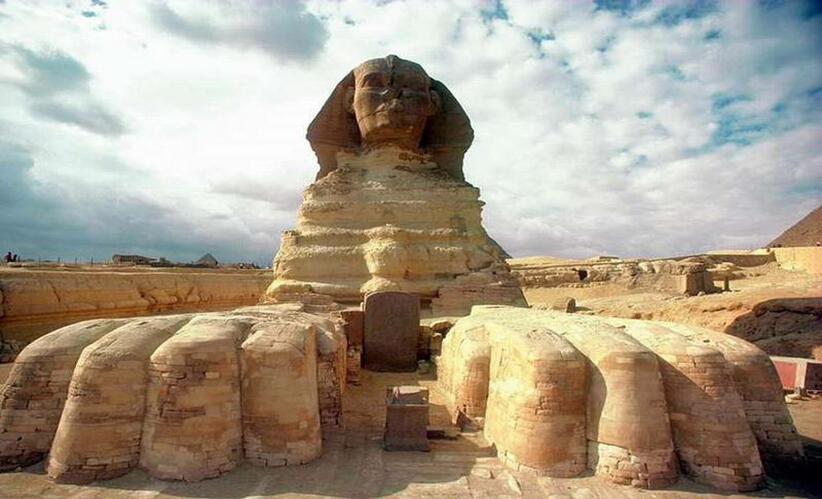
Exploring Ancient Myths and Modern Discoveries
Introduction Sphinx
The Sphinx, an iconic figure with the body of a lion and the head of a human, has intrigued humanity for millennia. Is this magnificent creature merely a creation of ancient imagination, or could it have once roamed the earth? In this comprehensive exploration, we delve into the realms of archaeology, mythology, and geological analysis to decipher the truth behind the Sphinx. Join us on a journey through time and legend to answer the age-old question: Are sphinxes real?
Chapter 1: The Great Sphinx of Giza
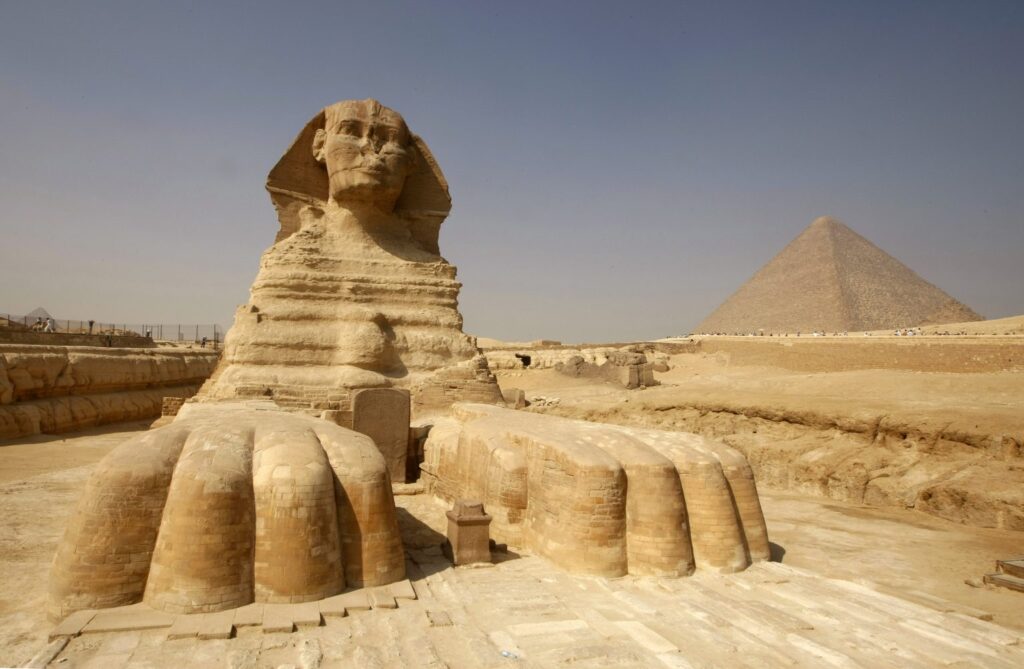
Engineering Marvel or Something More?
The Great Sphinx of Giza, towering over the Giza Plateau, is one of the world’s most renowned ancient structures. Carved from limestone, it stands as a testament to the astonishing engineering prowess of the ancient Egyptians. Standing at 66 feet (20 meters) and measuring 241 feet (73 meters) in length, it has been a subject of wonder and speculation for centuries. But was it simply a tribute to Pharaoh Khafre, or could it hold deeper secrets?
Chapter 2: Mythological Significance
Guardian of Riddles and Secrets
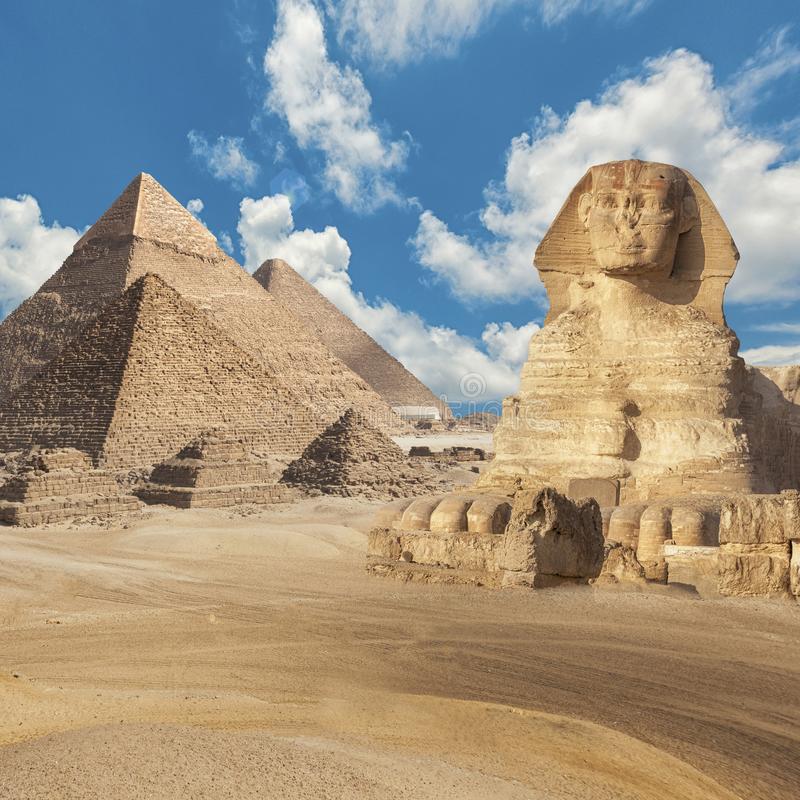
In Greek mythology, it is shrouded in mystery and renowned for posing riddles to travelers. Oedipus famously solved the Sphinx’s riddle, securing its place in ancient lore. This mythical creature has transcended cultures, leaving an indelible mark on the collective human imagination. What is the deeper significance of this enigmatic guardian?
Chapter 3: Global Echoes of the Sphinx
Unearthing Like Statues Worldwide
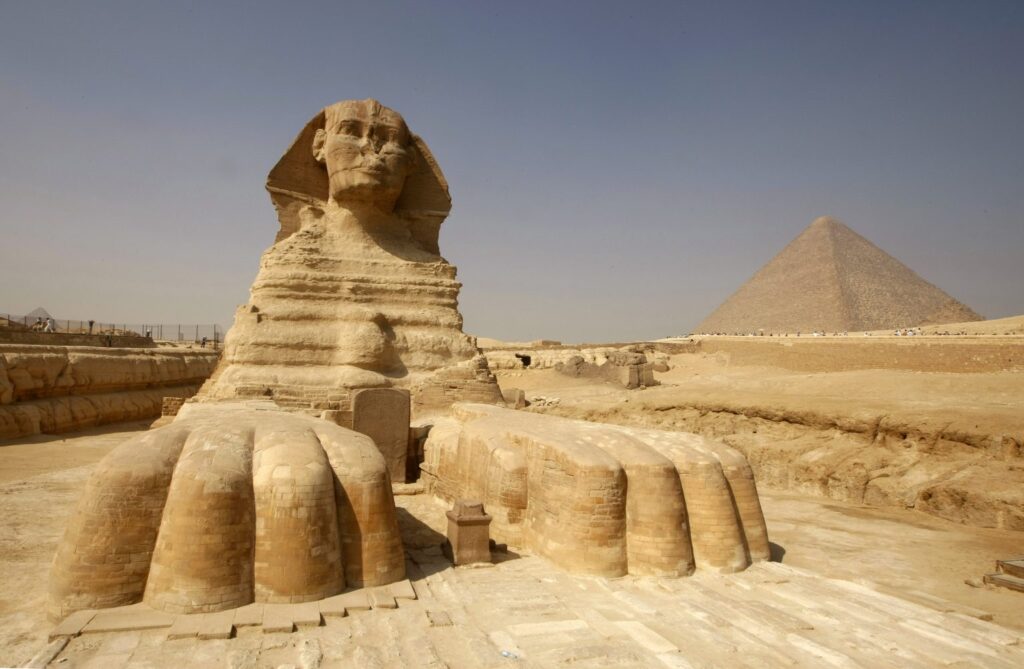
While the Great Sphinx of Giza is the most famous, it is not the sole-like creation in the annals of history. Archaeological excavations have unearthed similar statues across the globe. From Tanis in Egypt to Guatemalans, these discoveries raise tantalizing questions about potential cross-cultural influences. Do these statues hint at a shared memory of a real-life creature?
Chapter 4: Controversies and Theories
From Geological Clues to Alternative Histories
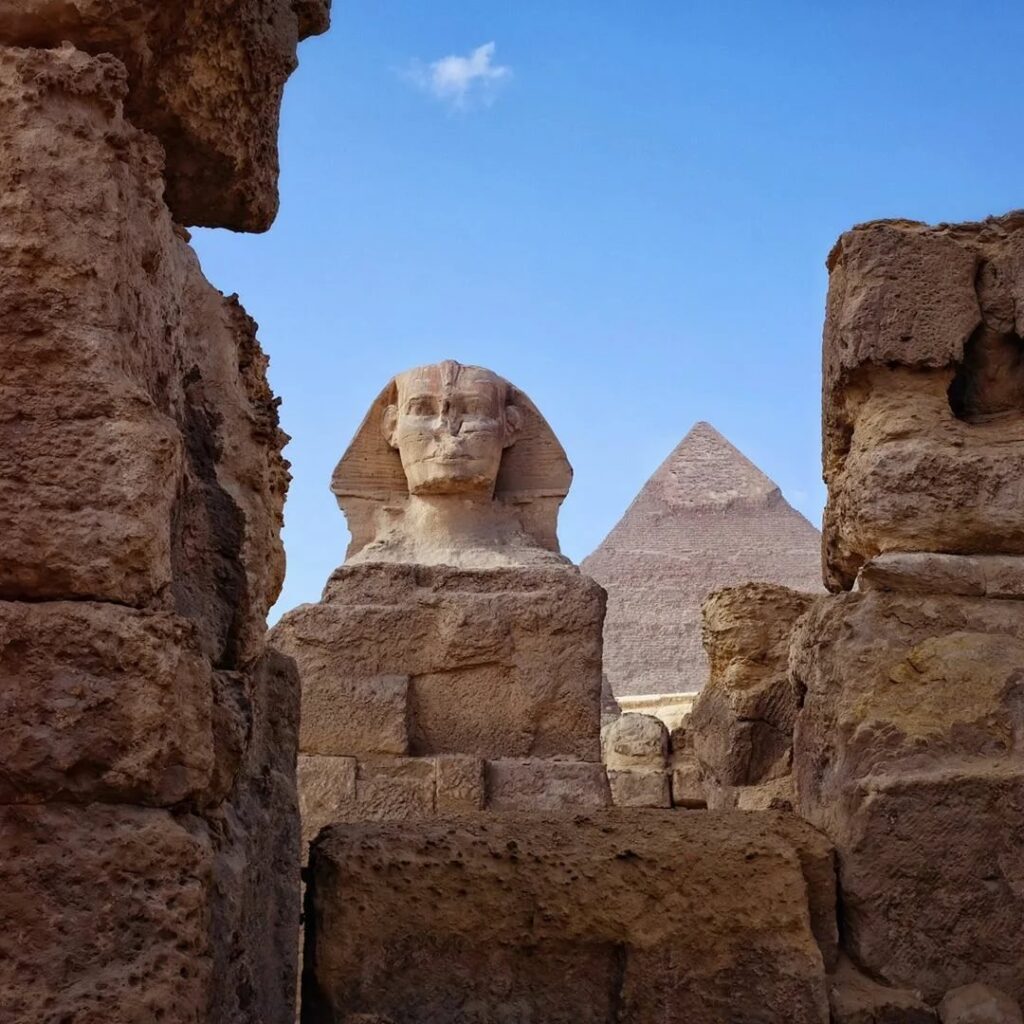
Scholars and enthusiasts have grappled with the true nature of this for centuries. Some suggest it might have served as an early observatory, while others propose a guardian deity. The controversy extends to its age, with geological analyses hinting at potential pre-dynastic origins. Could the Sphinx’s existence precede known Egyptian civilization?
Chapter 5: The Enigma Lives On
Legacy of Wonder and Awe
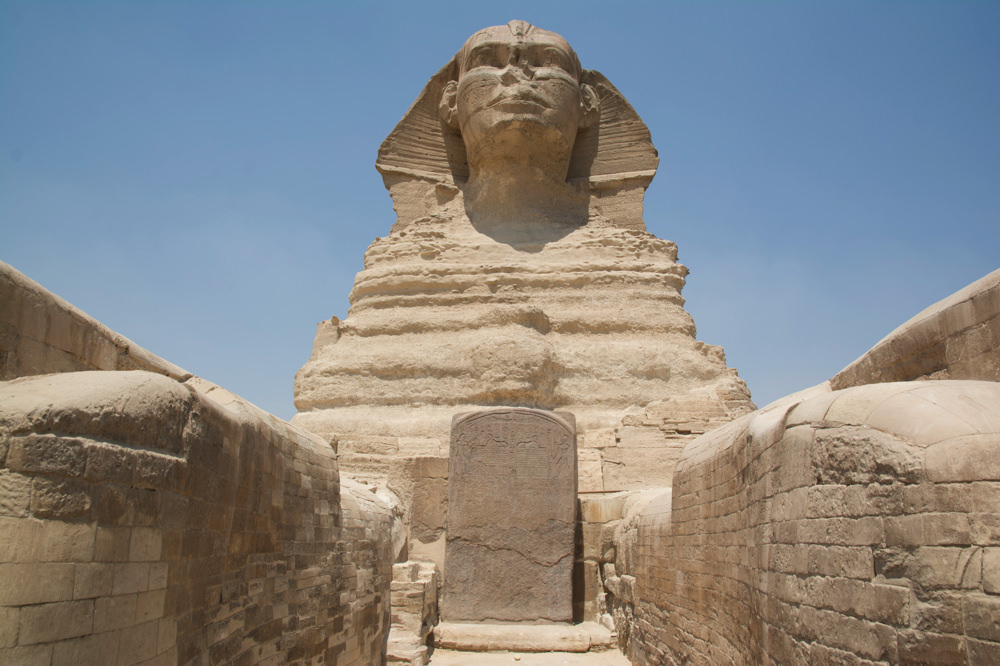
Regardless of its factual nature, the Sphinx continues to captivate visitors from around the world. Its enduring legacy speaks to the timeless fascination of humanity with ancient mysteries. The Sphinx’s gaze, unwavering through millennia, beckons us to explore the depths of our shared past.
The Sphinx, an ancient marvel that graces the Giza Plateau, reigns as one of history’s most captivating enigmas. Carved from limestone with a precision that defies the ages, its form embodies a blend of leonine might and human countenance. Standing sentinel at a towering 66 feet and stretching 241 feet in length, it has witnessed over four millennia of human history. Whether a homage to Pharaoh Khafre or a guardian of deeper truths, its true nature continues to stir scholarly debates and captivate the imaginations of those who ponder its origins.
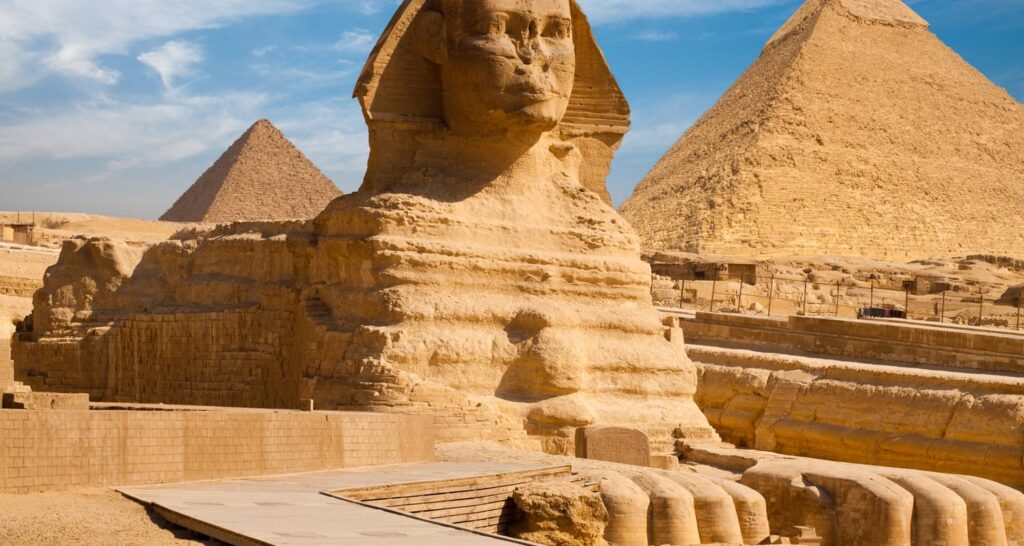
In the chronicles of Ancient Egypt, the Great Sphinx of Giza is an enduring emblem of the Old Kingdom’s architectural ingenuity. Theories abound regarding its conception, with the most widely held belief attributing its construction to Pharaoh Khafre during the Fourth Dynasty. Some posit that it serves as Khafre’s earthly incarnation, amalgamating the regal sagacity of a monarch with the primal vigor of a lion. Yet, as we delve deeper into this ancient wonder, we confront a realm of ambiguity and intrigue that stretches beyond the confines of the historical record.
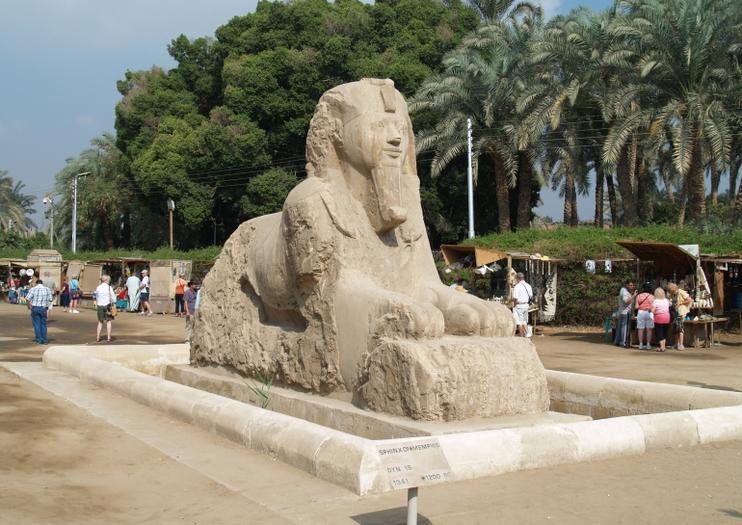
Greek mythology, a repository of ancient wisdom, weaves a distinct tapestry around the Sphinx. Here, it becomes a symbol of riddles and enigmas, most famously known for its role in the Theban Cycle. The Sphinx’s challenge—the riddle that precipitated doom for those who failed to solve it—remains etched in the annals of human narrative. “What goes on four legs in the morning, two legs at noon, and three legs in the evening?” The riddle posed by this enigmatic creature was the crucible that tested the mettle of Oedipus, solidifying the Sphinx’s place in the annals of ancient lore.

Yet, the Sphinx’s influence extends far beyond the boundaries of Greece. It finds echoes in the cultures of Mesopotamia, where hybrid beings held similar symbolic weight. Likewise, in the annals of Indian mythology, creatures with human and leonine features find their place. These cross-cultural parallels beckon us to consider the possibility of a shared cultural memory, a distant echo of an entity that once strode across the realms of human experience.
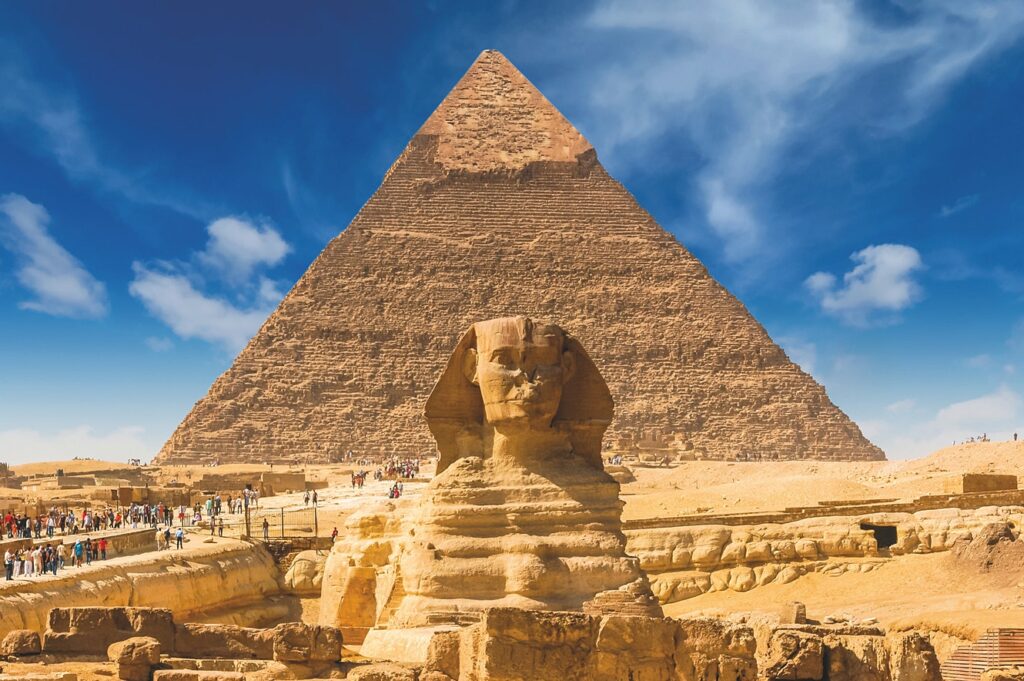
Archaeological endeavors, like the steady strokes of a brush on a canvas, have unearthed Sphinx-like statues on diverse corners of the globe. From the Sphinx of Tanis in the land of pyramids to the enigmatic figures of Guatemala, these discoveries stir the imagination. Are these statues mere artistic representations, or do they hold a deeper truth, a testament to the existence of a creature that transcended continents and epochs?

As with any ancient mystery, the Sphinx is shrouded in controversies and theories that provoke and stimulate the curious mind. Could it have served as an early form of astronomical observatory, a sentinel gazing at the celestial tapestry above? Alternatively, might it have been a guardian deity, a protector of sacred lands and ancient truths? The debate extends to its age, with geological analyses suggesting a lineage that predates the known chronicles of Egyptian civilization. Erosion patterns etched into the surrounding bedrock hint at a history that stretches back to uncharted epochs.
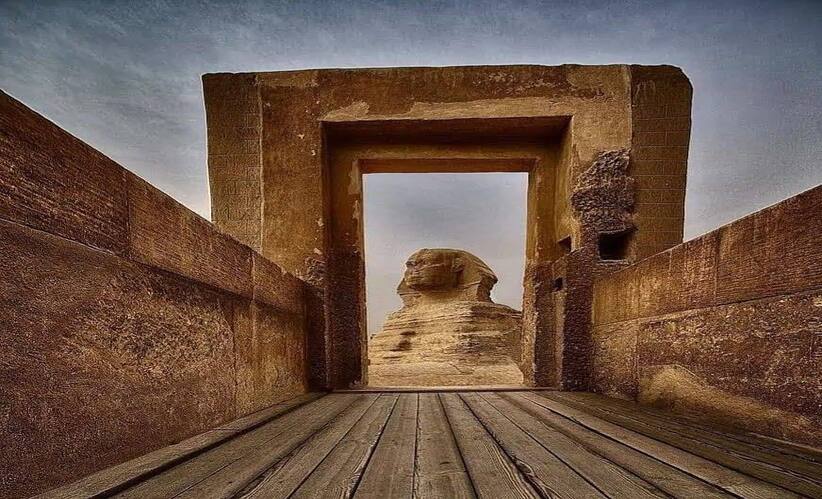
In the modern era, the Sphinx’s legacy endures as a beacon of awe and wonder. Pilgrims from every corner of the globe stand before its enigmatic visage, humbled by the weight of history it carries. Whether as a testament to the ancient world’s engineering prowess or a guardian of age-old mysteries, the Sphinx’s gaze transcends the boundaries of time, inviting us to peer into the depths of our shared human narrative.

In the midst of this pursuit of answers, we are reminded that some mysteries are destined to remain unsolved like fragments of a jigsaw puzzle lost to the sands of time. Yet, even in our quest for clarity, we unearth not only facts but also a deeper understanding of the boundless wonders that define our shared human journey. The Sphinx, with its enduring enigma, stands as a bridge across the ages, linking us to the tapestry of human experience that stretches far beyond the horizon of known history.





Comment (0)